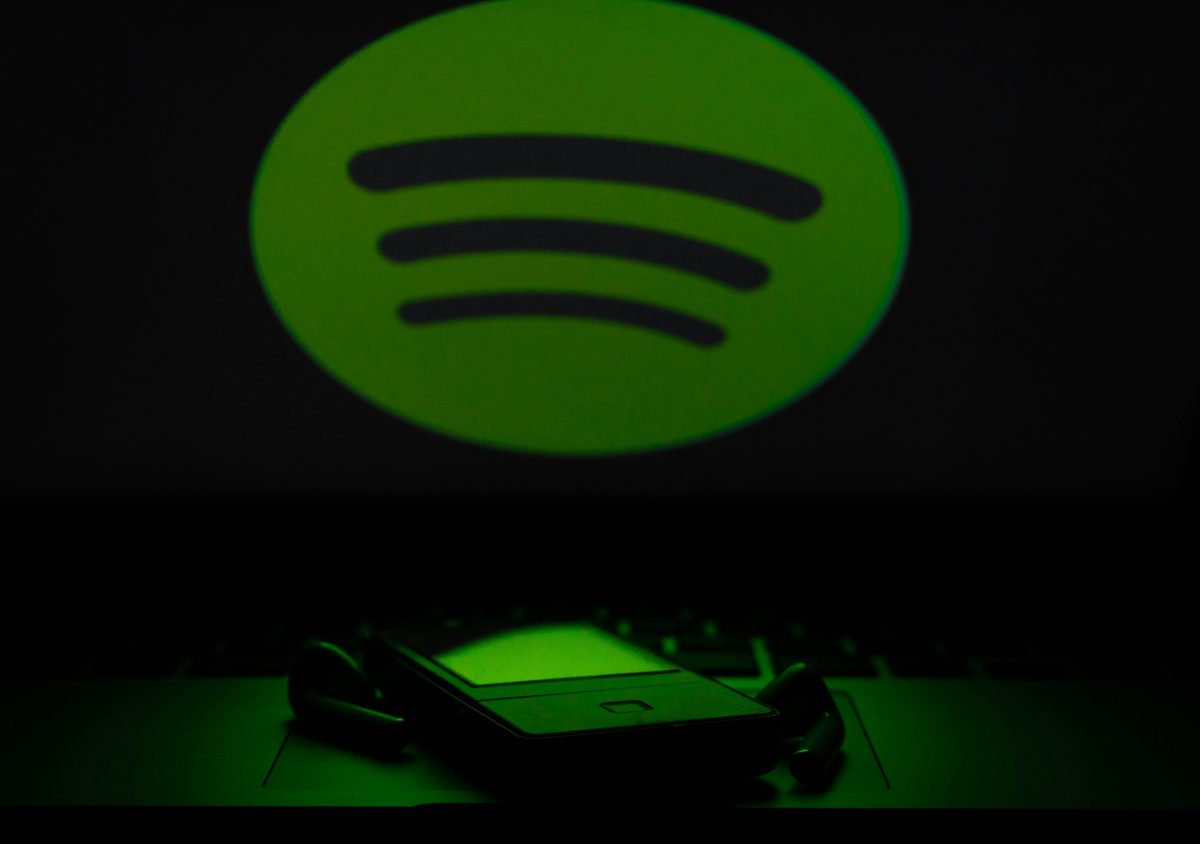Spotify is ‘more nutritious’ than rival apps, according to the audio app’s co-president and chief business officer, Alex Norstrom. The campaigners who lobbied to get misogynist influencer Andrew Tate booted from the platform disagree.
Norstrom told The New York Times last week that Spotify was ‘more nutritious’ compared with ‘high-caloric, quick things’ — a not-so-subtle swipe at the apps which game users’ attention with infinite scrolls of content and the promise of social approval. He added that using Spotify ‘takes commitment’ and users ‘tend to come out of it feeling better’.
This is not the first time Spotify has attempted to separate itself from the pack this way, either. Last year, it released a study that claimed 71% of Gen Z users see the app as their solution to doom-scrolling. The implication is clear: Spotify isn’t junk food for the brain. It’s a more conscious choice. A healthier digital habit.
But for campaigners and critics, that claim is hard to swallow.
‘No, I don’t believe Spotify’s “nutritional” framing accurately reflects its content offering — especially given its track record,’ said Renee Chopping from Collective Shout, the campaign group that recently helped force the removal of Andrew Tate’s Pimping Hoes Degree podcast from the platform. ‘It sounds more like PR spin than a genuine commitment to user safety.’
The content in question — a course teaching men how to exploit women — had been live on Spotify since 2023 before being removed last month. ‘It blatantly breached Spotify’s own platform rules around hate speech, abuse, and dangerous content,’ the campaign strategist explained, ‘and yet it remained live, unchallenged, for over a year — until we launched a public petition and shone a spotlight on it.’
While the specific podcast has now been removed, Collective Shout says the broader problem hasn’t gone away, arguing that Tate’s other material remaining on the platform shows there’s work for Spotify left to do.
The group also noted that Spotify, which has been named on the National Center on Sexual Exploitation’s ‘Dirty Dozen’ list two years in a row, was previously exposed for serving up porn-themed and sexually explicit content to kids — found through search terms like ‘Disney’ and ‘Minecraft.’
‘That’s not “nutritious” — that’s exploitation’, Renee added.
Controversy around problematic content isn’t a new problem for Spotify. In 2022, the platform faced a high-profile boycott from Neil Young and Joni Mitchell, who pulled their catalogues from the platform in protest over Spotify’s $200 million exclusive deal with Joe Rogan. The podcaster had been accused of platforming vaccine deniers during the pandemic — and had himself claimed that ‘healthy young people don’t need a Covid vaccine.’ Both Young and Mitchell eventually returned, but the reputational damage stuck — particularly among liberal, health-conscious audiences.
While the company might argue that the ‘nutritional’ description was meant comparatively, the reframe still feels odd — especially in the wake of Netflix’s hit series Adolescence, which has ignited a fresh public debate about the role of tech in fuelling misogynistic violence among young men.
In fairness, Spotify is not alone in dealing with these issues. Tech giants like Meta and TikTok have also tried to detox their reputations, rolling out tools like screen time limits and wellbeing nudges. Some are clearly reactive — part of a broader strategy to avoid regulatory scrutiny as governments consider smartphone bans for under-16s. In this context, describing your platform as a wholesome, high-fibre alternative isn’t just branding — it’s reputational defence.
But Spotify’s language is directed at advertisers. Norstrom’s comments were echoed at the company’s ‘Spotify Advance’ event this week, where global head of advertising Lee Brown told brands, ‘Spotify Free users tune in to Spotify for two hours each day… that gives brands the unique opportunity to connect with super-engaged fans in our positive environment. People feel good when they’re on Spotify.’
In other words: users are engaged, alert, and emotionally primed. That context, in today’s media landscape, is catnip for brands chasing meaningful attention. Research has shown that active attention is a better predictor of ad effectiveness than simple exposure. Particularly for smaller brands, active attention can mean the difference between cut-through and invisibility.
Spotify wants to be seen as an ‘active’ kind of platform. Not just used, but engaged with. Not passive, but purposeful. It may well succeed. In a distracted world, any platform that can promise focused moments will remain appealing to advertisers. But if it wants to call itself ‘nutritious’, critics say it needs to clean up the rest of what it’s serving.
‘If Spotify truly wants to offer ‘nutritional’ content, it needs more than buzzwords’, concluded Renee, ‘it needs a serious overhaul of its moderation policies, robust reporting systems that actually work, and real accountability for the kind of content it’s amplifying to millions — including kids and young people.’
‘Right now, it’s hard to avoid the conclusion that Spotify cares more about protecting its profits than protecting its users.’
Spotify has been approached for comment.
Photo by Reet Talreja on Unsplash.

